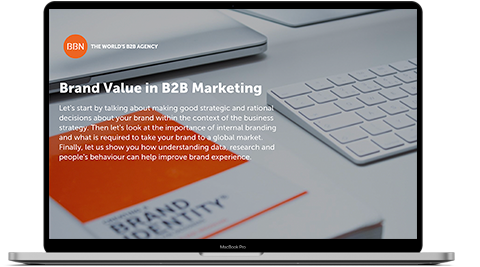Posted by BBN Central on 23rd Apr 2024
Quality Over Quantity: A Strategic Content Investment
Welcome to the fourth instalment in our series of seven articles, each dedicated to exploring smart investment strategies for fearless
READ MOREPosted by BBN UK (Aberdeen) on 27th Aug 2020
If you are involved in digital marketing or have ever worked with a digital agency then you’ve likely heard the term SEO or search engine optimisation. But, that doesn’t mean you understand what it is, why it is important or how to do it successfully.
It also doesn’t mean you can’t learn.
SEO is the process of increasing the quantity and quality of traffic to a website or webpage by increasing its visibility in a search engine’s unpaid results. The higher your website appears in the ranks, when people search certain keywords, the more likely you are to receive the traffic.
The benefits of a solid SEO strategy are obvious: free, passive traffic to your website, month after month.
But how do you develop a content strategy for SEO, and what “ranking factors” should you actually focus on? To answer that, we first need do understand how search engines work.
There are two different types of search results organic and paid. But, for the purpose of this blog we are going to focus on organic.
In simple terms, organic results are the free visits to your website and can be influenced by three different variables.
Before you can improve your SEO ranking, you’ll first need to know how your website or content strategy is currently performing.
Some of our favourite tools to help analyse SEO performance are:
These tools can also help you to see the areas that you are performing well whilst also highlighting the areas that may need improving.
Every website has a set of metrics, these metrics can help improve your websites ranking position.
The ultimate objective of any SEO strategy is to get more exposure and traffic for your website. Analyse how your site is currently performing and look for the quick wins that will help improve your rankings. Once you have made the quick fixes it is time to think about developing your strategy to climb the rankings. If you need help you know where to find us.
Photo by Markus Winkler on Unsplash
 |
About the authorClaire Smith works as a business manager at BBN UK (Fifth Ring)
|
Posted by BBN UK (Aberdeen) on 27th Aug 2020
We've gathered thoughts and expertise from our top strategists to bring you this insightful publication in B2B marketing. Get our e-Book to understand how you can build brand value in your organisation.

1 email a month, EXCLUSIVE stories, and 10 minutes of your time.
Subscribe now
Posted by BBN Central on 23rd Apr 2024
Welcome to the fourth instalment in our series of seven articles, each dedicated to exploring smart investment strategies for fearless
READ MORE
Posted by BBN Central on 12th Apr 2024
Welcome to the third instalment, focusing on smart investment strategies for fearless marketers aiming to win market share in the
READ MORE
Posted by BBN Central on 29th Mar 2024
Since the introduction of Sora, OpenAI's text-to-video model, the worlds of AI and marketing have been abuzz. It's being called
READ MORE
Posted by BBN Central on 19th Mar 2024
Account-Based Marketing (ABM) has rapidly gained traction in the B2B marketing world, promising personalized and efficient strategies to win over
READ MORE